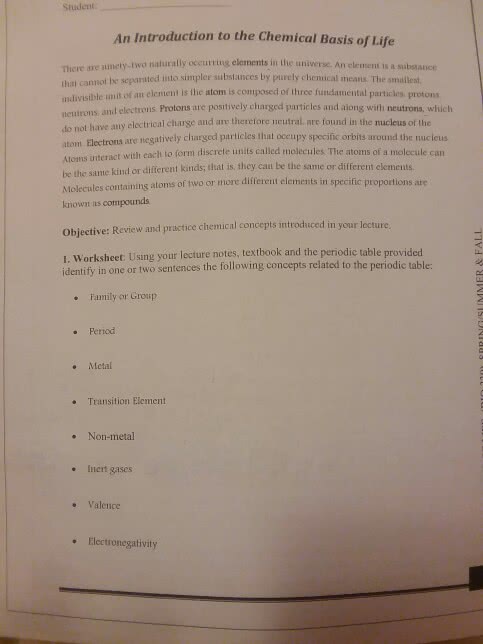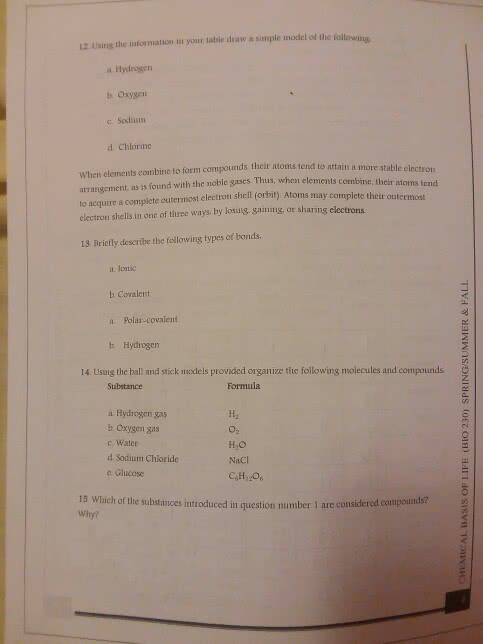please help me with this lab.
Ethanol Production
(Thermal Energy Conservation)
Lab Objective
Through this lab exercise, the principle of conservation of charge will be demonstrated using an adopted problem-solving methodology and a simple Matlab exercise.
Materials
Matlab 2007 or higher
Lab Assignment
Introduction
GASBUGS INC. is actually a division of a much larger alternate, fuel-generating corporation known as BIOFUELS INTERNATIONAL. One thing this company produces is ethanol (C2H6O) from an industrial process that uses a type of yeast (Saccharomyces cerevisiae). The elemental formula of S. cerevisiae is CH1.83 O0.56 N0.17 and it has a heat of combustion of approximately -21.2 kJ/g. In their batch process, .25lbmNH3 and 5.0lbm glucose are combined with the yeast at 25oC. After the reaction goes to completion (at least one of the starting reactants is used up), 1. 4 lbm of ethanol is produced. The unbalanced reaction for this process is:
C2H6O (s) + NH3 (g) â C3H8O3 (l) + C2H6O (l) + CH1.83 O0.56 N0.17 + CO2(g) + H2O (l)
Note: 1 mol of glucose produces .5 mole glycerol (C3H8O3) and that the ration of NH3 to H2O is 1:1.
You are told that it is likely that too much glucose is being added in the batch reactor process. It is your goal as the production engineering support specialist working for BIOFUELS INTERNATIONAL to model this scenario to determine how much unnecessary glucose is being added to reduce waste and cost.
Procedure
Follow the 4 steps of methodology for solving problems on pp. 44â46 of your textbook to set up the model.
Using MATLAB, create a plot that demonstrates the impact on ethanol production as the amount of glucose in the reactor varies from 1.0 lbm to 10 lbm.
Questions
How much excess glucose was being added to the reactor?
What is the ideal amount needed?
How much heat was produced and subsequently removed from the system?
Interpret the Matlab plot produced.
1.8 Methodology for Solving Engineering Problems. page 44-46. four steps.
Developing a pattern or methodology for solving engineering problems is important for consistency and thoroughness. The application of accounting and/conservation equations (discussed in Chapters 2â6) should be carried out in an organized manner; this makes the solution easy to follow, check, and be used by others. As a new engineer, you may find going through these many steps tedious and excessive for seemingly simple problems. However, when the level of difficulty increases, having a method or process to fall back on will be invaluable. Experienced engineers use most of the steps below when solving real-world problems.
The methodology laid out here or one similar to it should be used to solve problems throughout your career. The method outlined below is a general guide of the steps that will be followed to solve problems in Chapters 3â6 of this book, and as in real-world problems, only steps applicable to the problem should be performed. Other methodologies for solving problems are also valid; the critical issue is that you develop a thorough method and implement it regularly. As you mature as an engineer, it is appropriate that you develop your own problem-solving method.
1. Assemble. Information regarding the problem, including a picture, should be assembled and rewritten.
(a) The objective of the problem or the answer that you are seeking to findshould be clearly stated. This is often written as: Find: the flow rate ...
(b) Draw a diagram showing all relevant information. Often a simple box diagram showing all components entering and leaving the system allows information to be summarized in a convenient way. The system, surroundings, and system boundary should be drawn and labeled. When possible, all known quantitative information should be shown on the diagram.
(c) Set up a calculation table. The known values on your diagram, the components entering and leaving the system, form the foundation for the table. Units should be consistent across the table. The unknown components on the table (blanks) are often the desired answers. As you solve for different components, you can fill in the table. (Developing a table is optional, although useful, especially in multicomponent mass balance problems)
2. Analyze. A framework for understanding what is known and what is not known is developed at this stage.
(a) State any assumptions applied to the problem. Biological systems are extremely complex, since many processes and reactions, as well as transport of materials, are often going on simultaneously. Knowing when and where to make assumptions to simplify the system to a few salient features is the mark of an outstanding engineer. An example of an assumption is that the human forearm can be modeled as a cylinder.
(b) Collect and state any extra data. In this step, you may need to research information about a component in your system that was not given in the problem definition. An example of extra data that you may need to look up is the viscosity of plasma.
(c) List the variables and notations (symbols) adapted for the problem, and select a set of units for the problem. Typically, a choice is made to use either metric or British units throughout the problem.
[Note: The notations for variables may vary from discipline to discipline, but standard variables that are inherently understood within a subject do not always need to be listed. For example, kinetic energy is defined as EKin physics, but as T in mechanics. If you are calculating data that will be shared with coworkers of the same discipline, it is not necessary to define standard variables. Rather, variables specific to an aspect of the problem need to be defined (e.g., Fs = force of the astronaut on a chair).]
(d) State a basis of calculation. A basis is a specified input or output to a system (usually given as a flow rate or amount). In some problem statements, the basis is given. In other problems, values of components are given relative to one another and not as absolute amounts or rates. Select a basis if one is not given. Mass (Chapter 3) and energy (Chapter 4) problems often need a basis.
(e) If the problem involves chemical reaction(s), list the compounds involved and stoichiometrically balance the equation(s).
3. Calculate. Equations are developed and solved in a logical manner.
(a) Write down all appropriate accounting and/or conservation equations.Writing down the governing equations and then simplifying them by analyzing the system to eliminate unnecessary terms can be a helpful tool in solving engineering problems. For example, if asking the question, âIs this system at steady-state?â results in a positive response, the governing equation may be simplified by making the Accumulation term equal zero. This concept will be discussed further in Chapter 2. Write down any other essential equations needed to solve the problem.
(b) By applying the appropriate equations, calculate the unknown quantities. This is the heart of solving the problem and may require extensive effort. In some cases, the calculation of unknown quantities can be done sequentially. In other cases, it may be best to solve a series of equations using MATLAB or other computer software.
[Note: For a multi-unit or complex mass and energy conservation problems, a strategy to solve the problem may be required. A degree-of-freedom analysis is a systematic method to demonstrate whether a problem can be solved with the stated information and can help determine the sequence in which the equations should be solved. This process is discussed in chemical engineering textbooks (e.g., Reklaitis, Introduction to Material and Energy Balances, 1983).]
4. Finalize. Correct answers to the problem statement are stated clearly.
(a) State the answers clearly with appropriate significant figures and units. Confirm that you answered the specific questions asked by the problem
Laboratory Report Cover Sheet
DeVry University
College of Engineering and Information Sciences
Course Number: ECET301
Professor:
Laboratory Number: 3
Laboratory Title: Ethanol Production
Submittal Date: Click here to enter a date.
Write a brief technical lab report summarizing the technical facts learned from this lab. The report should be organized to provide the following:
Section 1âIntroduction: An introductory/summary paragraph describing the type of conservation principle being analyzed and the key elements that will be discussed relating to this principle.
Section 2âModel: The documented model using the standard problem-solving methodology in section 1.8 of your text.
Section 3âPlot: Matlab plot with script to generate.
Section 4âDiscussion: A section describing the most important characteristics shown, or demonstrate via the modeled and collected data. Also include a practical example of how the information learned in this assignment might help you in a job setting in the real world.
Section 5âConcluding Remarks: A summary statement listing the most positive aspects of the assignment and any difficulties encountered.


